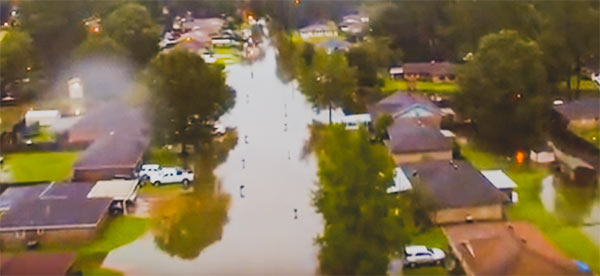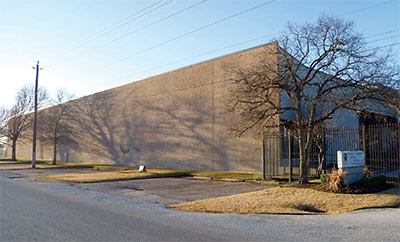SCHOOLS ARE NOW BUYING SPECIAL INSURANCE POLICIES IN CASE THEY GET SHOT UP  The market for “active-assailant” insurance is alive and well, reports the Wall Street Journal, as more and more private schools, public schools, charters, and universities go on fiscal defense against the threat posed by fire-armed students — who cost districts a lot of money in counseling expenses, crisis management, extra security, and of course lawsuits. (“If you’re a risk manager for a school district, you have to look at it with the same eye that you might look at coverage for a tornado,” says a researcher at the University of South Carolina. “We live in a very litigious United States.”) The policies function as a type of gap insurance, covering expenses not typically included in general liability like funeral costs and death benefits, often up to $250,000 per victim. For smaller schools, premiums range from roughly $1,800 to $1 million, and for larger ones up to $20 million. Just last month, Ohio underwriter McGowan Program Administrators wrote over 60 policies, a representatives tells the WSJ. And of the 300 policies it’s written total, some have already been paid out. [Wall Street Journal; previously on Swamplot] Photo of Santa Fe High School, Santa Fe, Texas: Santa Fe ISD
The market for “active-assailant” insurance is alive and well, reports the Wall Street Journal, as more and more private schools, public schools, charters, and universities go on fiscal defense against the threat posed by fire-armed students — who cost districts a lot of money in counseling expenses, crisis management, extra security, and of course lawsuits. (“If you’re a risk manager for a school district, you have to look at it with the same eye that you might look at coverage for a tornado,” says a researcher at the University of South Carolina. “We live in a very litigious United States.”) The policies function as a type of gap insurance, covering expenses not typically included in general liability like funeral costs and death benefits, often up to $250,000 per victim. For smaller schools, premiums range from roughly $1,800 to $1 million, and for larger ones up to $20 million. Just last month, Ohio underwriter McGowan Program Administrators wrote over 60 policies, a representatives tells the WSJ. And of the 300 policies it’s written total, some have already been paid out. [Wall Street Journal; previously on Swamplot] Photo of Santa Fe High School, Santa Fe, Texas: Santa Fe ISD
Tag: Insurance
WHY YOU MIGHT WANT TO FILE YOUR HARVEY INSURANCE CLAIMS BEFORE FRIDAY  Suffered property damage from Hurricane Harvey and have access to a smartphone, computer, pen and paper, or your insurance agent? Forget about waiting for waters to recede before filing any insurance claim. You’ll want to do it now — or at least before Friday. What’s the rush? The new Texas law formerly known as House Bill 1774, passed by the Texas Legislature this session and signed by Governor Abbott in May, goes into effect on September 1. The “hailstorm lawsuit reform” measure reduces property owners’ leverage with insurance companies in weather-related claims — by making it more difficult for homeowners to sue agents successfully, increasing the obstacles to filing and carrying through with lawsuits over insurance coverage, and limiting the penalties insurance companies could face if they lose a lawsuit against you. To prevent your coverage from falling under these stipulations, notify your insurance provider of your claims before the law goes into effect, and document your correspondence. [Community Impact; Texas Tribune; Property Insurance Coverage Law Blog] Photo: Randy Poole
Suffered property damage from Hurricane Harvey and have access to a smartphone, computer, pen and paper, or your insurance agent? Forget about waiting for waters to recede before filing any insurance claim. You’ll want to do it now — or at least before Friday. What’s the rush? The new Texas law formerly known as House Bill 1774, passed by the Texas Legislature this session and signed by Governor Abbott in May, goes into effect on September 1. The “hailstorm lawsuit reform” measure reduces property owners’ leverage with insurance companies in weather-related claims — by making it more difficult for homeowners to sue agents successfully, increasing the obstacles to filing and carrying through with lawsuits over insurance coverage, and limiting the penalties insurance companies could face if they lose a lawsuit against you. To prevent your coverage from falling under these stipulations, notify your insurance provider of your claims before the law goes into effect, and document your correspondence. [Community Impact; Texas Tribune; Property Insurance Coverage Law Blog] Photo: Randy Poole
COMMENT OF THE DAY: WHAT ENDING FEDERAL FLOOD INSURANCE SUBSIDIES COULD DO FOR GALVESTON  “Biggert-Watters would have destroyed the home market in many of Galveston’s West End beach communities. My wife and I were looking at homes just as the revised rate plan went into effect in late 2013. The quote I received for JUST FLOOD INSURANCE on a $250K house was $40,000 per year. As long as the government allows federally backed mortgages in these areas, they will have to subsidize the insurance rates. It really is that simple. If the rates aren’t subsidized, the market will collapse for these homes. It will be a vicious circle. Those that need a mortgage to afford a home won’t be able to afford insurance. Those who own a home with a mortgage won’t be able to afford insurance. Homes will only be marketable to cash buyers who can self-insure. How much would you pay for a home that you could only market via an owner-financed or cash transaction? A property that would essentially be unmarketable to buyers via traditional mortgage.” [Mike Honcho, commenting on Comment of the Day: Why You Can Get Flood Insurance in Houston] Illustration: Lulu
“Biggert-Watters would have destroyed the home market in many of Galveston’s West End beach communities. My wife and I were looking at homes just as the revised rate plan went into effect in late 2013. The quote I received for JUST FLOOD INSURANCE on a $250K house was $40,000 per year. As long as the government allows federally backed mortgages in these areas, they will have to subsidize the insurance rates. It really is that simple. If the rates aren’t subsidized, the market will collapse for these homes. It will be a vicious circle. Those that need a mortgage to afford a home won’t be able to afford insurance. Those who own a home with a mortgage won’t be able to afford insurance. Homes will only be marketable to cash buyers who can self-insure. How much would you pay for a home that you could only market via an owner-financed or cash transaction? A property that would essentially be unmarketable to buyers via traditional mortgage.” [Mike Honcho, commenting on Comment of the Day: Why You Can Get Flood Insurance in Houston] Illustration: Lulu
COMMENT OF THE DAY: WHY YOU CAN GET FLOOD INSURANCE IN HOUSTON  “There is no market at all for flood insurance. It’s a massive federal subsidy that is merely administered by private companies.
You can’t effectively insure against floods.
This is one of those things many Texans like to ignore — that our coastal development is highly subsidized in the form of the government-backed NFIP.” [JR, commenting on Comment of the Day: A Better Way To Tell If Your Home Is Going to Flood] Illustration: Lulu
“There is no market at all for flood insurance. It’s a massive federal subsidy that is merely administered by private companies.
You can’t effectively insure against floods.
This is one of those things many Texans like to ignore — that our coastal development is highly subsidized in the form of the government-backed NFIP.” [JR, commenting on Comment of the Day: A Better Way To Tell If Your Home Is Going to Flood] Illustration: Lulu
COMMENT OF THE DAY: WHEN IT RAINS, IT’S RECOUPED  “I live close to Buffalo Bayou. I lost two cars during a heavy rain in 2009. The water came up too fast to save the cars. By the time I found out they were flooding they were in a couple feet of snake infested water. The insurance company paid up right away and didn’t raise my rates. These people should have no problem if they have insurance.” [jgriff, commenting on Headlines: Putting the Creek in Cross Creek Ranch; Flooding the Omni Hotel Parking Lot] Illustration: Lulu
“I live close to Buffalo Bayou. I lost two cars during a heavy rain in 2009. The water came up too fast to save the cars. By the time I found out they were flooding they were in a couple feet of snake infested water. The insurance company paid up right away and didn’t raise my rates. These people should have no problem if they have insurance.” [jgriff, commenting on Headlines: Putting the Creek in Cross Creek Ranch; Flooding the Omni Hotel Parking Lot] Illustration: Lulu
COMMENT OF THE DAY: THE COMING FLOOD OF FLOOD INSURANCE PREMIUM HIKES  “If flood insurance becomes as expensive as predicted by the Chron article, it would make large parts of Houston financially uninhabitable. Folks owning property in the Heights now have even more reason to be pleased with themselves.” [Chef, commenting on Headlines: A PAC for the Astrodome Plan; A Kibosh on Free Rail Rides to Texans Games] Illustration: Lulu
“If flood insurance becomes as expensive as predicted by the Chron article, it would make large parts of Houston financially uninhabitable. Folks owning property in the Heights now have even more reason to be pleased with themselves.” [Chef, commenting on Headlines: A PAC for the Astrodome Plan; A Kibosh on Free Rail Rides to Texans Games] Illustration: Lulu

How was Seabrook homeowner Brad Gana able to wriggle out of foreclosure proceedings on his home at the last minute? By hiring a lawyer to argue that his house does not exist. And indeed, the visual evidence is compelling: All that’s left of Gana’s waterfront structure at 1910 Todville Rd., which apparently washed away 3 years ago during Hurricane Ike while Gana was working overseas, is an empty slab, protected by a front gate and littered until recently with a few of Gana’s tools and collectibles. (After the proceedings were canceled, KPRC’s Amy Davis reports, Bank of America had those items removed from the property.)

Looking for a safe place to keep its voting machines after the previous storehouse on Canino Rd. was destroyed in a mysterious fire last year, county officials have at last found the perfect uh, match: a 1980-vintage tilt-wall car-storage facility owned by the estate of a billionaire plaintiff’s attorney who died in a car crash. No harm came to the $250 million worth of cars John M. O’Quinn kept in this warehouse at 11525 Todd Rd. after he was killed in an accident on Allen Parkway 2 years ago, but the building was available. One of 3 suites in the 123,930-sq.-ft. structure near the Hempstead Highway and 34th St. currently serves as the black-box home of the Houston Academy of Dramatic Arts. The county is paying O’Quinn’s estate $4.35 million for the facility, with some of that money coming from the fire-insurance claim. Also moving into the building, after a $2 million renovation: county tax assessor-collector Don Summers and his collection of old license plates and tax records.
- County voting machines find a home [Houston Chronicle]
- Warehouse blaze still a mystery and Police: O’Quinn driving nearly twice the speed limit [Houston Chronicle]
- Voting machine fire not arson [Houston Politics]
Photo: LoopNet
THAT FLOOD OF DOLLARS Flooding means big bucks for Houston! And just think of how much more cash we could be raking in here if more than 1 in 5 households bought in: “Since 1978, Houstonians have received more than $1 billion worth of flood insurance checks, according to the National Flood Insurance Program. That ranks fifth among cities and counties nationally. Harris County, not counting Houston, ranks seventh. Flood Control District spokeswoman Heather Saucier cites the figures as proof that locals who have flood insurance use it. ‘If you don’t live in a mapped floodplain, It doesn’t mean you don’t need flood insurance. It means you get cheaper flood insurance,’ Saucier said. She said most insurance companies carry it, and since agents just pass through NFIP policies at set rates, no shopping around is necessary. Congress has let the flood insurance program lapse, but Linda Delamare, the federal government’s senior regional insurance specialist for Texas and four other states, said the lapse is temporary. Congress routinely reauthorizes the program in short order, and consumers should still pursue policies, she said.” [Houston Chronicle]
SOUNDING THE ALARM AT THE AURORA PICTURE SHOW The microcinema’s founder, Andrea Grover, reports on the little Sunset Heights church on Aurora St. turned little movie theater — turned little crime scene: on recent events at the Menil-bungalow office of Aurora Picture Show on Sul Ross: “Now that the dust has settled . . . it’s OK to tell you: Aurora was burglarized, not once, but twice in 9 days, and the insurance claim was denied. . . . There was a small clause about a B3 monitoring system (a monitored alarm) that was not highlighted at signing and allowed the insurer to deny Aurora, after eleven uninterrupted years of payments to them (without a single claim) – probably amounting to $30-40,000 in insurance payments. . . . Now, out over $5000 worth of equipment, plus staff time, and contract labor for clean up . . .” [Facebook, via Arts in Houston]
COMMENT OF THE DAY: RELEASING THE WILSHIRE VILLAGE INSURANCE HOLD “. . . Why keep residents there? Insurance for an occupied commercial exposure is MUCH cheaper than a vacant one. Vacant buildings or sites have to be secured to prevent problems with the city and attractive nuisance lawsuits. Rent was coming in, even if it was minimal. All roads lead to the fact that it was financially advantageous to not change anything until time to do something else with the property.” [Hellsing, commenting on Wilshire Village Moving Day: They Shall Be Released]
A question from a Swamplot reader:
My husband and I lost our Heights bungalow (and the hundred-year-old oaks that shaded it) to Hurricane Ike. We have decided donate the remnants of the house to Historic Houston for salvage, sell our lot . . . and use our insurance settlement to pursue our dream of purchasing an older commercial building, like an old two-story brick grocery store, somewhere inside the loop in the $200K – $350 range, 3000 – 4000 sq. ft., for mixed use as a residence upstairs and studio space/small theater downstairs. We are not having much luck.
My question is this: aside from all the usual avenues–Commgate, Loopnet, HAR, reading blogs, driving around, submitting LOI’s, what other resources exist for novice commercial buyers, like us?
WHERE THERE’S SMOKE That fire in the atrium office building at 9343 North Loop East almost 2 years ago still heats up the Houston real estate scene: “An insurance company with a potential $25 million liability from a 2007 Houston office fire is claiming smoke that killed three people was ‘pollution’ and surviving families shouldn’t be compensated for their losses since the deaths were not caused directly by the actual flames. Great American Insurance Company is arguing in a Houston federal court that the section of the insurance policy that excludes payments for pollution — like discharges or seepage that require cleanup — would also exclude payouts for damages, including deaths, caused by smoke, or pollution, that results from a fire.†[Houston Chronicle]
MIDSUMMER BOOKS: 8 FEET IS ENOUGH This fall was the final season for Midsummer Books, near the Strand in Galveston: “‘All those shops and restaurants on Strand, Mechanic and Postoffice were hit bad, and Midsummer Books got 8 ft of muddy water which soaked and ruined everything, books, furniture, computer equipment, etc.,’ owner Tim Thompson says by e-mail. ‘Luckily I have flood insurance so I will most likely get compensated for the loss. However, this is one of those times in life where tough decisions have to be made and for a variety of reasons I have decided not to ressurect Midsummer Books,’ he says.” [Hair Balls]
SHOULD GALVESTON BE REBUILT? “The city and its environs rest on barrier islands, which are made of sand, low-lying and prone to significant geological shifts. In Galveston’s case, even before Ike’s landfall, the island was both sinking slowly and becoming sharply eroded along its west end. Moreover, a couple of years ago, the city itself commissioned University of Texas geologist Jim Gibeaut to create a geohazards map for the island, that is, where should development not occur? The research study found that nearly all the development along the beach front west of the seawall, which protects the core of the island, is in ‘red’ or ‘yellow’ zones, where Gibeaut says development should not occur.” [SciGuy]

